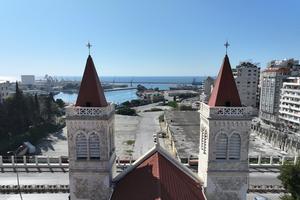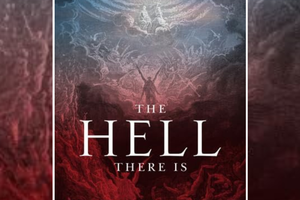Meet the Only Priest Among Indian’s 35 ‘Martyrs of Kandhamal’
Amid the horrific massacre, Father Bernard Digal was an inspiring shepherd to his people.

Editor’s Note: The author, who has chronicled Kandhamal’s incredible Christian witness, personally knew the martyred priest.
ODISHA, India —There is only one Catholic priest among the 35 Catholic “martyrs of Kandhamal” for whom the Vatican Dicastery for the Causes of Saints gave a nihil obstat on Oct. 18 “to initiate the process of beatification.”
In late August of 2008, 46-six-year-old Father Bernard Digal, procurator of the Archdiocese of Cuttack Bhubaneswar, was traveling to Kandhamal to review the construction of a new church in his native parish of Tiangia when anti-Christian violence erupted there following the Aug. 23 assassination of Swami Lakshmanananda Saraswati, the leader of Hindu nationalist groups in Orissa. Although local Maoists claimed responsibility for his assassination, Hindu groups immediately blamed the murder on Christians instead.
Father Digal had stopped at the parish of Sankarakhole, where elderly Father Alexander Charalankunnel was the vicar, when the shocking news of the murder of Lakshmanananda broke.
Sensing trouble, Father Digal, a native of Kandhamal, decided to stay with the 73-year-old priest. The next day, they learned the funeral procession of the slain swami was to pass nearby.
As the massive procession came closer to the church on Aug. 25, locals learned of the plot to burn the church and the nearby convent.
The two priests, three nuns and their staff fled to the jungle, driving as far as they could. A mob descended on the church campus and looted and torched the church building, stoned to death the parish’s two dogs and chopped down trees in the compound. They went searching for Father Digal’s van, parked deep inside the jungle, and torched it.
Providentially, the small group was not in the van.
Having spent the night in the jungle, the priests, nuns and staff came back to the devastated church center the next morning. After gathering half-burnt food, Father Digal ventured out with his driver and a local youth to look for a motorbike to take the elderly Father Charalankunnel, who was struggling to walk, safely out of Kandhamal.
After they walked for nearly 10 miles, without finding transportation, the exhausted pair decided to rest inside a burnt village church for the night.
Beaten Savagely
“My companions woke me up on hearing the sounds of an approaching mob, and they took to their heels. Before I could flee, they caught me and started beating me,” Father Digal told this correspondent on Sept. 10, 2008, from his hospital bed in Mumbai.
I became acquainted with Father Digal in Bhubaneswar, soon after the earlier 2007 Christmas outbreak of violence in Kandhamal, in which more than 100 churches and institutions were torched by Hindu nationalist outfits. This orchestrated violence, I found out later, was the rehearsal for the bloodshed of the following August.
As I was proceeding toward Kandhamal with a couple of Christian members of Parliament and others on a fact-finding trip, Father Digal insisted on my carrying a small bag only. Our friendship grew over months, and I was eager to check on him when he was in the Mumbai hospital.
In this hospital, Father Digal recalled how he pushed the assailants away with all his strength and ran for his life through the bushes in pitch darkness. But they managed to catch him, stripped him of the clothes and rained blows. A hit on the head with an iron rod left him semi-conscious in the jungle.
“I was worried if I would get a funeral. I could hear jackals howling and feared that they would eat me. I was extremely thirsty, and I had to drink my own urine with my hands while lying there,” recounted the priest.
As the sun rose, Father Digal started crying for help. An elderly woman came along. But finding him naked and soaked in blood, she fled. Later, a boy heard his cries and brought along fellow villagers, who carried the injured priest to the nearest road and called the police, who took him to the government hospital in Phulbani.
After emergency treatment, Father Digal was rushed to Bhubaneswar via a round-about route due to the widespread violence. From Bhubaneswar, he was flown to Mumbai.
More Concerned About Others
When Cardinal Oswald Gracias of Mumbai visited Father Digal at the hospital, I was there. “I am lucky and okay now,” Father Digal told Cardinal Gracias, despite both his legs being fractured and having a deep blood clot in his brain.
“But I am worried about the people there. The suffering of our people is hurting me more than my own pain. In Phulbani [hospital], a seriously injured boy and his mother were on the beds near me while the body of his murdered father was kept outside,” Father Digal told me later.
When his condition improved after weeks of treatment, Father Digal was moved to the nearby Catholic monastery for rest. He flew to Chennai when he learned that Father Alphonse Boliarsingh, vicar general of the Cuttack-Bhubaneswar Archdiocese, had undergone emergency bypass surgery.
During this visit, Father Digal fell ill due to his brain clot. He slipped into a coma and died within a couple of days, on Oct. 28, 2008, at St. Thomas Hospital in Chennai.
Since the atmosphere in his native Tiangia village, where half a dozen Christians had been killed brutally, remained dreadful, Father Digal was buried in Bhubaneswar.
“We have no words to share our joy over the Vatican announcement. We thank God for this blessing,” Benedict Digal, a laborer and elder brother of Father Digal, told the Register Nov. 10 from Tiangia in Kandhamal.
Benedict and his sister Teresa had traveled to the Odisha capital for the funeral of their younger brother from the refugee camps in Kandhamal, as their houses had been destroyed in the orchestrated violence of 2008.
Added Benedict Digal of the beatification news, “We thank God for this blessing.”
What Happened in Kandhamal?
The Kandhamal district, 150-250 miles southwest of the Odisha capital of Bhubaneswar, witnessed the worst anti-Christian violence in modern Indian history following the mysterious murder of 81-year-old Swami Lakshmanananda Saraswati in his ashram (spiritual hut) on the Hindu festival night of Aug. 23, 2008.
The body of the slain swami was taken across Kandhamal in a funeral procession for two days, and his followers, touting the murder instantly as a “Christian conspiracy,” called for revenge on Christians. Hindu nationalist groups promptly declared that the murder was a Christian conspiracy and banned Christianity in Kandhamal.
Christians were ordered to proceed to temples to recant their faith in Christ. Those who defied were burnt alive, buried alive and dismembered. Nearly 100 Christians were killed, while more than 300 churches and 6,000 houses were plundered in unabated violence that rendered over 56,000 homeless.
The Catholic Church has compiled a list of 105 martyrs, two-thirds of them non-Catholics. Among the 36 Catholics, the Vatican dicastery has approved the beatification process for 35 of them — 14 of them killed instantly, while others died of injuries.

















